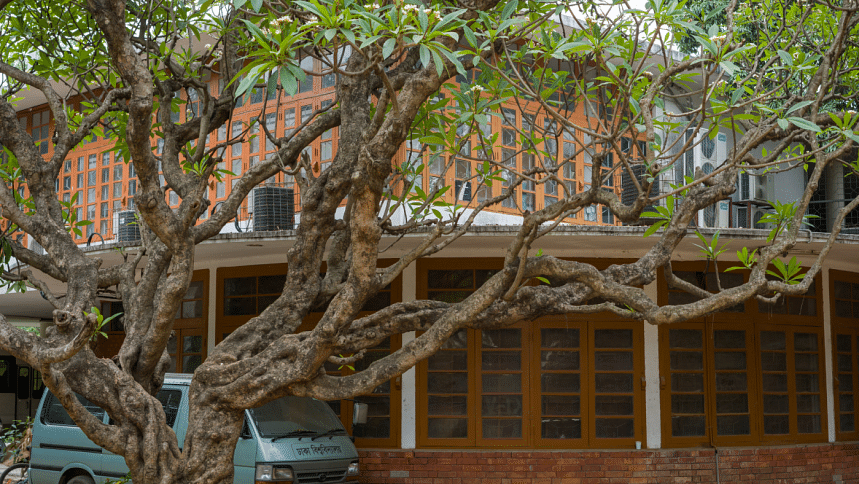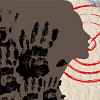What it takes to get into DU “Cha” unit

It was during the middle of my higher secondary education when I started to realise that I wanted to continue my academic education in fine art. I basically just felt the urge to paint consistently for some years or more. Painting helps me feel alive and momentarily stops me from thinking about anything else. I knew I loved how it felt despite all the struggles of the process or any looming stress over my head.
Being an ex-cadet, I had to face a lot of social prejudices when I decided to get admitted into a fine art academy. People around me expected that I would be studying engineering, medical subjects, or some reputed subject at Dhaka University (DU).
A vast majority of people in this country still have some questionable ideas about the students who study fine arts. These are silly ideas, and I couldn't care less. In later years, I came across many kinds of stories from my classmates about how they ended up at the Faculty of Fine Art, DU. The mix is diverse – many wonderful artists and designers have been engaged in creative pursuit since a very early age and some people had never even tried to draw a single scratch of anything before deciding to take preparation for the admission test.
The Faculty of Fine Art comprises eight different departments: Drawing & Painting, Sculpture, Printmaking, Graphic Design, Oriental Art, Ceramics, Craft, and History of Art. Applying for the admission test for the "Cha" unit can be a good option for anyone looking forward to pursuing a career based on any of these subjects.
Exam strategies are open to change every year, so the applicants must stay updated about that. Usually, the exam has two methods of evaluation. Firstly, there's the multiple-choice questions (MCQ) part for evaluating the theoretical knowledge of the applicants. The second part is a drawing test. Marks distribution of the MCQ and drawing test can be 40-60 or 50-70 on average if we look at the questions of the past few years, meaning both of the tests are equally important.
For the MCQ part, my personal opinion is that following the NCTB textbooks, especially for Bangla, English, and Literature segments, is the best strategy. These books are often overlooked by the admission coaching centres when it comes to "Cha" unit preparation. After analysing the questions of recent years, I found that the textbooks can even help a little with the general knowledge part of the MCQ questions.
Then comes the MCQs based on art history, art materials, folklore, and the biographies of prominent artists from national and international peripheries. Solving the previous year's questions can actually give a lot of hints about these topics. One can also use the internet for further research. Ultimately, I do think a mentor or proper guidance from somewhere is needed for a lot of students as art is not something we are very accustomed to through our earlier academic experiences. Since there's a time limit during the stressful journey of the admission tests, guided preparation can help to navigate the time constraint.
The practical or drawing part is always tougher than it looks. The drawing exams hold a lot of marks, where meeting certain requirements of academic drawing is of utmost importance if we want to pass this test properly. However, it must be noted that the Faculty of Fine Art doesn't expect us to be master artists when we sit for their entrance exam. But one must have some basic knowledge about the academic process of drawing before starting the journey of graduation in fine arts. So, the drawing on the exam sheet might not be a very good drawing or not even complete, but it should portray the steps that show the student's control and confidence over the pencil lines, sense of proportion, light shade, composition, and a three-dimensional understanding of the subject. An overall artistic depiction on top of all that might make it look close to complete.
These are all easier said than done, especially when it comes to live drawings of human figures or any other subject. One might have previous experiences drawing or painting with colours, but exhibiting all those qualities in a pencil drawing is usually a result of some kind of academic orientation and a great deal of hard work. This is where many applicants face issues, as there aren't a lot of coaching centres in this country which can help them take preparation for the admission test.
But every year, the senior students of the Faculties of Fine Art from DU and other prominent universities organise workshops for those who are eager to get into the education of fine art. These might be the best places for "Cha" unit preparation. But these facilities are mostly available in Dhaka, and the students who cannot attend the workshops from other parts of the country can find it difficult to take preparation. Finding an experienced mentor might be a good option for them. Guidebooks are published from the workshops as well including detailed instructions just before the exams every year. Collecting the books from the online pages of those workshops can be helpful too. A lot of personal research on how to improve my drawings from the internet besides attending the workshop helped me in my case.
Freaking out before exams doesn't help, as stress always makes the situation worse. Starting from the easier parts and moving to the difficult ones can make the process more effective. This goes both for the study and the stay in the exam hall. Trying to cram before the exam and forcing yourself to take in all kinds of information will only result in exhaustion and confusion in the exam hall. Starting to study the easiest topic and trying to learn as much as possible from then on can help a student keep cool before any exam.
Above all, I strongly emphasise maintaining good health, eating nutritious food, and drinking a lot of water before exams. The stress of an admission test or anything shouldn't be more important than someone's health. It's just not worth it. Every student has their individual journey and needs. This write-up might not be effective for everyone. But all a student can do at a time like admission tests is to try their hardest in their individual situations and hope for the best. For the "Cha" unit, an admission exam might go right or wrong, but it can never define someone's worth and potential as an artist.
The writer is a student at the Department of Drawing & Painting, Faculty of Fine Art, Dhaka University.

 For all latest news, follow The Daily Star's Google News channel.
For all latest news, follow The Daily Star's Google News channel. 








Comments